
SERVICES AND PROFESSIONALS
Arbuthnott,
Richard (Dick)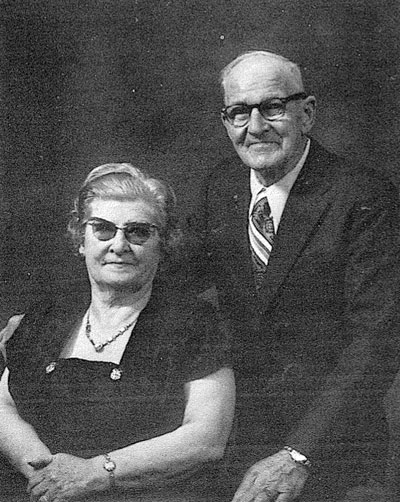 Biography: Born at Craig Park, Inverkeilor, Angushire, Scotland m. 1924 to Ida. Claims: He came to Canada in 1913 at age eleven with his parents, brothers and sisters. Blacksmith for Albert Stilwell for seven years then bought the business in 1936. Later was caretaker of Erin Park and manager of Killarney Arena. Probable Significance: Modest Source: Source: Trails & Crossroads to Killarney p. / Reflections p. 188 Highlights from Local Histories Richard (Dick) was born in Scotland. He came to Canada in 1913 at age eleven with his parents, brothers and sisters. They lived a few years in Winnipeg then came to live at Treherne. Dick became a blacksmith by trade as was his father. Ida was born at Exeter, Ont in 1901 and came west to Treherne in 1919. She and Dick were married at Souris in 1924 by the Rev. Coleman. They spent some time in Ontario at Cameron Falls near Nipigon on a hydro project. From there they came to Killarney by train in 1925 at 2:30 p.m. Dick was coming t.o work for Albert Stilwell, blacksmith and carriage maker. Dick was shoeing horses shortly after 3:00 p.m. that day. Dick worked for Abe Stilwell for seven years then rented the shop and eventually bought it in 1936. The hungry thirties were a trying time for everyone and Dick's wages were often a load of wood or a quarter beef taken in by Mr. Stilwell on accounts owing. Barnfield, Wilfred, Biography: Claims: Section foreman on the railway in Killarney from 1898 to 1901. He also cut ice from the lake during the winter, which was shipped out by train. Another occupation was digging wells and at this work he was involved in a tragedy. His companion was overcome by gas when he went down the well to retrieve a glove he had left there. Fred had lowered him by a rope tied to his leg but was unable to haul him up because of the scaffolding. Probable Significance: Modest Source: Trails & Crossroads to Killarney p. 357 / Reflections p. Bate, Aquila Biography: b. 1880 Claims: First Teacher – Oak Lake (Killarney) School, 1883. Oak Ridge School, In 1887 appointed Assistant Post Mistress. Postmistress from 1920 – 1923. Probable Significance: High Source: Trails & Crossroads to Killarney p. 212 / Reflections p. 200, 110 Highlights from Local Histories Aquila Bate, then fifteen years old, kept a diary in which she wrote an account of their trip from England. When Killarney (then called Oak Lake) school opened in 1883, she became the first teacher, having been granted an interim certificate by the Department of Education. She went to Winnipeg to the Teachers In- stitute in 1886, where she received her teacher's diploma. As she had to leave before the railway reached Killarney, her father drove her to Brandon on a day so cold that he had to lift her out of the sleigh when they arrived. Six weeks later she returned by train to Killarney. It took two days to come from Winnipeg for there was an overnight stop, but it was warm and comfortable. She taught the rest of that year in Oak Ridge school (then called Killarney). By 1887 the Killarney post office was busy enough to require an assistant and Aquila was appointed. When her father died in 1920, she was postmistress until she resigned in 1923. Bate, Charles  Biography: In 1883 he was appointed as the first Postmaster. He served for 37 years. He was followed by Aquilla Bate, On the first school borard. His home became the first Museum. Organized the first Sunday School in 1883. Claims: Probable Significance: Source: Trails to Killarney p / Reflections p.  Highlights from Local Histories Charles Bate was born in Plymouth, England, and entered the Royal Navy in 1853 where he served for twenty- six years, retiring in 1879 with a pension and two medals. In 1862 he married Aquila Crockford. They had five children, all born in England, Charles, Aquila, John, Eleanor (Mrs. A. M. High), and Honora. In 1880 the Bate family ventured forth to Ottawa where they spent two years. It was there that Charles met John Sydney O'Brien who told him about Killarney. In the spring of 1882, Charles Junior took a job with a government survey party, and his father came to Killarney where he filed a claim to E 4-3-17, part on one side of the lake and part on the other. The south part was low meadow and very stony, the north, bush and oak groves, not a good choice but not a serious matter as Charles Bate never developed into a farmer. After building a house of poplar boards from the mill at Wakopa, he went back to Ottawa for his family. Unfortunately Eleanor and Honora had had scarlet fever and were too weak to travel, so Charles returned to Killarney with his son John. His wife and daughters left Ottawa October II and he met them at Emerson wearing a peaked cap, grey shirt, and red bandanna neckerchief. His wife was horrified. She had never seen him in public except in navy uniform or with top hat and cane. The trip from Ottawa took nine days to reach Winnipeg, five waiting for the car with their goods and chattels, three in Brandon, and two and a half driving from Brandon. When they arrived at the homestead on the north shore of Killarney Lake, the first snow of the season was drifting down over the gray water and leafless trees. With William Willoughby to help him, Charles Bate drove back to Brandon for their belongings which included furniture they had bought in Ottawa, and linen, silver, china and a chain-stitch sewing machine brought from England. The house was very cold as it was only one ply of boards with daylight showing through in places. For warmth a tent was put up in the living room in which the parents and daughters slept. Their breath made frost on the linen sheets they had brought from England and they had to be thawed out the next day. They wore mittens to make the beds. Although they had a cook stove and a box stove, a wet dishcloth laid on the table between them soon froze. On April 1, 1883, Charles Bate became postmaster, a position he held for over thirty-seven years. In 1886 he moved the post office to Killarney and, until 1889 when the family joined him there, John and his sisters did most of the farm work. They had a dugout about a yard deep, built up at the sides and roofed over for a barn. In summer they rowed across the lake to milk the cows in the pasture. Some of the men in the village pastured their horses there, paying $1.00 a month per horse. "We were unbelievable greenhorns," wrote Mrs. High, "When we did not know how to get the chickens killed for the winter, my elder brother Charles solved the problem by shooting them with his revolver. When a calf or a pig had to be butchered our neigh- bour, William Riddell, came over and helped. Mother had learned to make bread before leaving Ottawa, and at a stopping house on the way she had observed a woman making butter. She proceeded to make butter, colouring it with carrot juice and packing it for the winter in large ornamental vases Father had brought from China. She made pie from rabbits we children snared in the bush and pre- pared standard English food like roast beef and suet pudding. (Alas! the day C. W. Gordon chanced to stay for a meal she had nothing in the house to offer him but potatoes.) But whatever the fare Mother always set the table with a white cloth and table napkins." They had hardly any money. What Charles Bate saved from his navy pay was all spent, mostly on equipping the farm, and his pension and salary were infinitesmal. But they all worked and the older children, Charles and Aquila, contributed to the family exchequer. Charles Bate was elected to the Council of Turtle Mountain Municipality in 1883, appointed Justice of the Peace, and was one of the first trustees of Killarney School, later serving as secretary- treasurer until 1906. He became a lay reader in the Anglican Church and was secretary of the Killarney Musical and Literary Society. On September 3, 1883, he organized a union Sunday School, held first in the school house and later in Pritchard's Hall. David Finlay, one of those who attended, wrote, "He had been a sailor and kept excellent discipline. He delighted in seeing children happy but would tolerate no mischief." About 1898 each denomination took over its own Sunday School and Charles Bate was superintendent of the Anglican school until 1914. His son Charles remained with the government in the Department of Agriculture in Ottawa. Eleanor married Archie M. High. Honora did not marry. Brown, Walter with Brown, Hannah G. Biography: Claims: Draying Service. Reeve 1903 -1908. When all freighting and hauling was done with horses, many draying teams were needed. Walter Brown, who had the C.P.R. contract for handling express, was succeeded by his wife, Hannah G., a colorful lady who donned overalls and carried on by herself for several years. Though a slight little woman of senior years, she seemed able to manhandle freight meant for men accustomed to such heavy work. Probable Significance: Source: Trails to Killarney p / Reflections p. Carson, William John 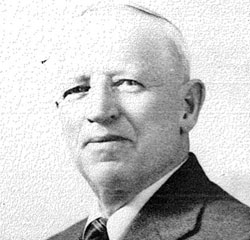 Biography: (1875 - ) Married Mary Effalena King in 1902. Claims: Druggist Degree in 1904 he purchased Mr Olver's store, later known as the Rexall Store. He built the brick building later operated by Mr R Perrin. In 1905 Bell Telephone Co installed the first switchboard in Killarney in the back of the store and Mr Carson became the first operator. Member of the Chamber of Commerce, served on the council and was Mayor of Killarney 1940- 43. Canoe club, curling club and golf club. Probable Significance: Source: Trails to Killarney p / Reflections p. Dagg, R.L. 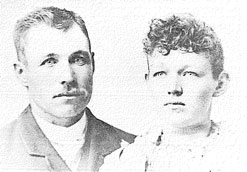 Biography: Claims: Teamster, drayman. Probable Significance: Source: Trails to Killarney p / Reflections p. 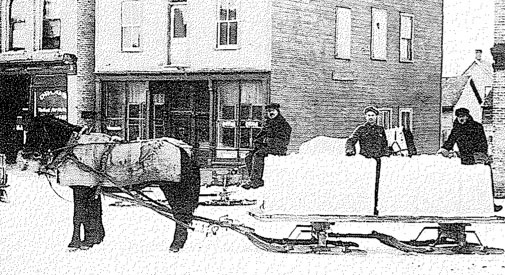 Mr. Richard Dagg delivering ice winter of 1914. Mr. Art Boyce, Mr. Harry Smith (son-in-law of Mr. Dagg). Highlights from Local Histories Richard was born in Lucan, Ont and became a school teacher. His two brothers, James and Frank who came to Manitoba to take up homesteads, sent for Dick to come west as they said "The gold was laying on the 'Prairie"', meaning the wonderful crops of wheat on the virgin soil. He came in 1882, homesteaded eleven miles southwest of Killarney, farmed until he could claim his land and then sold it to his brother. Richard married Margaret Moxley in 1893. Margaret was born in Ottawa and came to Brandon with her parents, in1884, then to Killarney in 1885 by covered wagon. Dick and Margaret moved into Killarney, bought the first public schoolhouse that had been built and moved it and lived there for many years. Dick started an ice business by cutting ice in Killarney Lake and selling it to merchants and private homes. The ice was packed in sawdust and stored in sheds to be used in ice boxes which served as refrigerators. The ice blocks, three to four feet deep, would keep all summer. Dick often hired six men to keep up with his orders. In the summer he took any job that was available. He was a founder member of the Orange Lodge in Killarney, and among the men who were put on guard after the "Strangler" was jailed in Killarney in 1927. Dunn, William Biography: Claims: Well Digger. Town Constable who was in charge of the jail, during the “Strangler” incident. See Reflections p 58 Probable Significance: Source: Trails to Killarney p / Reflections p. Images: As Above Content: No additional information Edwards, P.C. 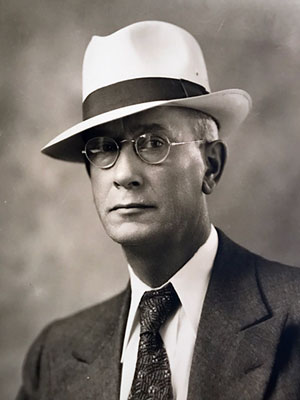 Biography: (1878-1952) In 1921 he married Florrie McCormick (Hellis) Claims: Jeweler, municipal official. He started in photography in a large studio in London. There he became an accomplished photographer and technician and remembered working on many portraits of Queen Victoria, other Royalty and heroes of the Boer War. In 1903 he came to Canada to settle on a homestead in Saskatchewan, but fortunately decided to get off the train in Boissevain. He worked on a farm and in a tinsmith shop that winter and came to Killarney in 1904 to open a studio with a Mr Scott. He operated studios in Cartwright, Crystal City, Pilot Mound and Manitou for many years. Probable Significance: Source: Trails to Killarney p / Reflections p. 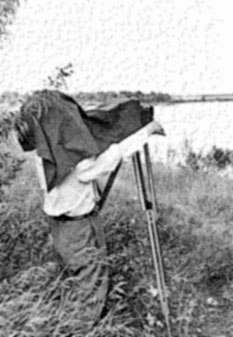 At Killarney Lake From the Local History Sources... PC Edwards (1878-1952) was born into a large family in Kentish Town, London, Eng. He started in photography at an early age in a large studio in London. There he became an accomplished photographer and technician and remembered working on many portraits of Queen Victoria, other Royalty and heroes of the Boer War. In 1903 he came to Canada to settle on a homestead in Saskatchewan, but fortunately decided to get off the train in Boissevain. He worked on a farm and in a tin- smith shop that winter and came to Killarney in 1904 to open a studio with a Mr Scott. Scott left for the US in 1910 and PC operated the studio until his death. The studio was first located upstairs on the east side of Broadway about where No. 523 is now. In 1917 a fire destroyed several businesses in that part of the block and he lost everything as well as all of the negatives of the early days of Killarney. Many prints of these negatives are around today, especially in the JAV David Museum. The building was rebuilt by PJ Sherlock and the studio reopened on the ground floor In 1921 he married Florrie McCormick (Hellis) and lived at 538 Clark Ave. Edith, Florrie's daughter from a previous marriage, lived with them and their son, John, born 1923. PC saw many changes in photography, from the days of glass plates to roll film. In early days he would load up a buggy and drive around the country taking pictures of the threshing outfits so workers from the east could send home pictures of the wild west. He operated studios in Cartwright, Crystal City, Pilot Mound and Manitou for many years. A photographer did not make much money during the thirties and many a chicken or quarter of beef was traded for Christmas portraits. With the war years, business picked up and most of Killarney's servicemen and women had their portraits taken by PC before they went over-seas. PC and Florrie lived a quiet life and the home on Clark Ave was a showplace with many flower gardens and shrubs. Florrie worked at the studio when needed and enjoyed the lakeshore, boating and visiting with her friends. After the war PC was joined in his work by his son, John and continued to work until he became ill in 1951 As far as is known the first photographer in Killarney was a Mr. Martin. He probably did not have a studio and did only a small amount of work. About the same time Mr. Osborne's name appears on photographs and he later ran a studio in Boissevain. Hatch, W.H. Biography: Claims: Established the Killarney Guide in 1894. Left after 2 years. Probable Significance: Source: Trails to Killarney p / Reflections p. Hay, Arthur George 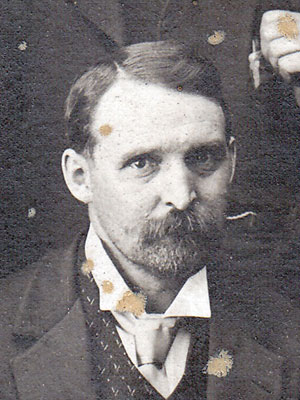 Biography: Ontario (1862 – 1931) married Eliza V. Robertson Claims: called to the Manitoba Bar in 1893. He moved to Killarney and established a law practice there. Probable Significance: Source: Trails to Killarney p / Reflections p. From the Local History Sources... Lawyer. Born at Paisley, Ontario on 16 December 1862, son of Robert Hay and Janet Fleming, he graduated from Queen’s University (Kingston) in 1889 and, the next year, came to Winnipeg where he studied law for three years and was called to the Manitoba Bar in 1893. He moved to Killarney and established a law practice there. Finding insufficient business there, he took a position as town solicitor at Virden. From 1922 to 1931, he was District Registrar at the Virden Land Titles Office. On 24 December 1894 he married Eliza V. Robertson of Kincardine, Ontario. They had four children: Lilian Robertson Hay (b 1895), William F. Hay (b 1899), Arthur John Hay (1906-1949), and Elizabeth Mary Hay (1915-1999). He was involved with the Virden Board of Trade and St. Andrew’s Society. He died at Brandon on 12 January 1931 and was buried in the Virden Cemetery. Hunter, Henry Biography: (1852-1937) in 1875 married Elizabeth Dickson (1855-1912) Claims: worked in A. J. Rollins' store at the east end of the bay. During the winter he drove to Brandon taking wheat there and bringing back supplies for the store. In 1885 when the railway was being built across their land, the children pitched a tent near the tracks and did a flourishing business trading butter- milk to the camp cook for cookies. Hunter Pennick: Biography: ( d.1943) In 1905 he married Elizabeth Tracy Claims: Pennick was a natural mechanic and fitted a third wheel to his bicycle so he could ride it on the rails. He also built a windmill which could be used to saw wood. For many years he did custom threshing, both with steam and gas outfits. He was a member of the first Killarney fire brigade. Probable Significance: Modest Source: Trails & Crossroads to Killarney p. 260 / Reflections p. McNamee, William Biography: married Winnifred Stilwell in 1899. Claims: Blacksmith. Noted curler. Probable Significance: Source: Trails to Killarney p / Reflections p. William McNamee married Winnifred Stilwell in 1899. Will ran the blacksmith shop for many years and was a noted curler. Monteith, J.H. Biography: Claims: Killarney Guide. Raised in the Highview district, a son of the first Mayor of Killarney, he learned the printing trade in Winnipeg. Immediately before coming to Killarney he had been employed at the Manitoba Free Press. Probable Significance: Source: Trails to Killarney p / Reflections p. Monteith, George Bertram 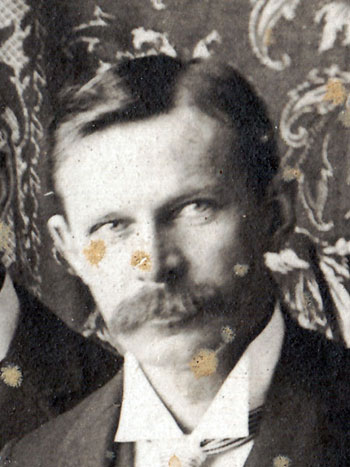 Biography: Ontario. (1868 – 1952) . On 12 September 1900, he married Mary Kerr (?-1941) Claims: Lawyer. Established a law practice at Killarney. He was a Liberal candidate for the Killarney constituency in the 1903 provincial general election Probable Significance: Source: Trails to Killarney p / Reflections p. From the Local History Sources... Born at Exeter, Ontario on 22 May 1868, son of Robert Monteith and Mary Kilpatrick, brother of John Herbert Monteith, in 1896 he graduated with a BA from the University of Manitoba. He was called to the Manitoba Bar in 1899 and establish a law practice at Killarney. He was a Liberal candidate for the Killarney constituency in the 1903 provincial general election. On 12 September 1900, he married Mary Kerr (?-1941) of Winnipeg. They had two daughters: Barbara Monteith and Mary Monteith. He moved to Winnipeg in 1912 where he died on 3 February 1952 and was buried in the Elmwood Cemetery. Moody, Martin Biography: (1852-1924) In 1877 he married Janet Aldcorn ( - 1943) Claims: Drayman / Teamster. Well-known Clydesdale horse breeder and raised Shorthorn cattle and Plymouth Rock hens. Probable Significance: Source: Trails to Killarney p / Reflections p. Stilwell Fred Biography: (1835 – 1908) Claims: Blacksmith. Decided in 1888 to look for a promising site for a blacksmith shop in the west and chose Killarney because he wanted to live near a lake. He established a blacksmith shop and carriage works on Broadway. Probable Significance: Medium Source: Trails & Crossroads to Killarney p. 313 / Reflections p. Highlights from Local Histories FRED STILWELL (1835-1908) of Newcastle, Ontario, decided in 1888 to look for a promising site for a blacksmith shop in the west and chose Killarney because he wanted to live near a lake. The next year he returned with his wife, and sons, Albert and George, and daughters, Mrs. Annie Kent (Mrs. Arthur Mustard) with her son, Fred, and Winnie who married William K. McNamee. He established a blacksmith shop and carriage works on Broadway. He was an enthusiastic gardener, bringing raspberry canes and lily of the valley from Newcastle. He was one of the first in the district to grow and ripen tomatoes. He was a keen fisherman and loved the lake, usually walking around the hill road with his grandson, Fred Kent, on Sundays. He was fond of music and led Holy Trinity Choir until his death in 1908. Waldon, Thomas Biography: 1865-1947 In 1894 he married Ellen Elizabeth Neill (1868-1937) Claims: Vet. Ontario Veterinary College graduated about 1892. In March 1898 with two small children they came to Killarney where they lived the rest of their lives. Probable Significance: Source: Trails to Killarney p / Reflections p. 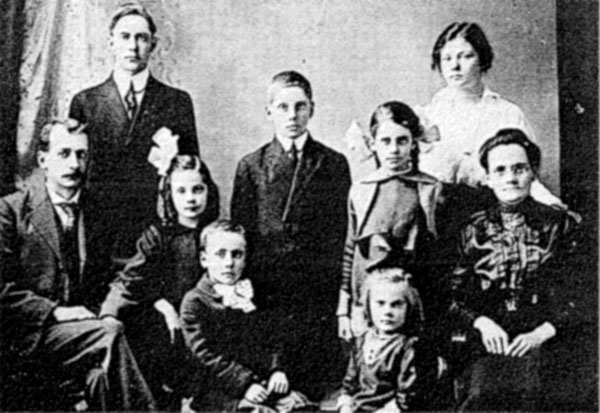 Thomas and Ellen Waldon and family. Harold, Bertha, Neill, Ida, Evelyne, Charlie and Ruth. Walker, Harry Ewart Biography: (1882 – 1961) 1913, he married Martha McCrindle (1878-1936) Claims: He was the Superintendent of the Killarney Demonstration Farm (1917-1920, 1927-1947) and Secretary of the Killarney Agricultural Society (1928-1949). Probable Significance: Source: Trails to Killarney p / Reflections p. Wilkins, Thomas E. Biography: Born in Reston 1905. Married in 1933 to Elva Dafoe Claims: Came to Killarney in 1929 as a linotype operator and printer. He was a member of the staff of the Killarney Guide, owned by J.H. Monteith. For 17 years he worked under Herb Monteith, until 1946 when he purchased the business which he operated for many years. President of the Chamber of Commerce, as a director of the Manitoba Chambers of Commerce. Director and later President of the Manitoba Weekly Newspapers Assoc. and one term as director of the Canadian Weekly Newspapers Assoc. As a member of Killarney Masonic Lodge, he filled the chair as Master of the lodge for one term. He served on the Board of the Killarney Agricultural Society and was for several years Chairman of the Board of Lakeview Home for senior citizens. He was a member of the Board of Brandon College before it became a University. Tom has long been a member of the Peace Garden Board and its executive and is currently the vice-chairman. Probable Significance: Source: Trails to Killarney p / Reflections p.  Mr. and Mrs. Tom Wilkinson and Donna at the Newspaperman’s Ball for the 1967 Centennial in Ottawa. From the Local History Sources... Thomas E. Wilkins a native of Reston, Man. where he was born Dec. 23, 1905, came to Killarney in 1929 as a linotype operator and printer. He was a member of the staff of the Killarney Guide, owned by J.H. Monteith. For 17 years he worked under Herb Monteith, until 1946 when he purchased the business which he operated for many years, selling out to Jack Boak, an employee in 1974. During that time his wife Elva (nee Dafoe) whom he married in 1933 aided in the business of running the paper and for 25 years wrote a "Friendship Column" of local interest, featuring gardening, plant care and related subjects. It was through her column that interest in a horticultural society was fostered and subsequently formed. Also because of her gardening activity, aid was sought in planting trees at the park and on the former hospital grounds. Previous to her marriage Elva had worked as a clerk in several stores, first with W.A. McKnight an early storekeeper; later for Ernie Richards and finally with his successor G.M. Anderson. After easing up on the business activity, Elva became interested in ceramics and has for 15 years given in- struction in the art in her basement studio. She was in- strumental in the formation of the Western Manitoba Ceramic Association and, with, Tom led in the founding of the Canadian Ceramics Association of which he is secretary-treasurer. T.E. Wilkins served on several occasions as president of the Chamber of Commerce, as a director of the Manitoba Chambers of Commerce and, on one occasion ran for Mayor of the town; but was defeated by the incumbent Mayor P.J. McDonald. He also served as a director and later President of the Manitoba Weekly Newspapers Assoc. and one term as director of the Canadian Weekly Newspapers Assoc. As a member of Killarney Masonic Lodge, he filled the chair as Master of the lodge for one term. He served on the Board of the Killarney Agricultural Society and was for several years Chairman of the Board of Lakeview Home for senior citizens. He was a member of the Board of Brandon College before it became a University. Tom has long been a member of the Peace Garden Board and its executive and is currently the vice-chairman. Woods, Isaac Biography Wife, Marion (nee Bower), Claims: Cheesmaker. Came to Killarney from Seeley's Bay near Kingston, Ont in 1889. brought out by Alex David to operate the cheese factory at Oak Ridge, west of Killarney. Probable Significance: Source: Trails to Killarney p / Reflections p. |